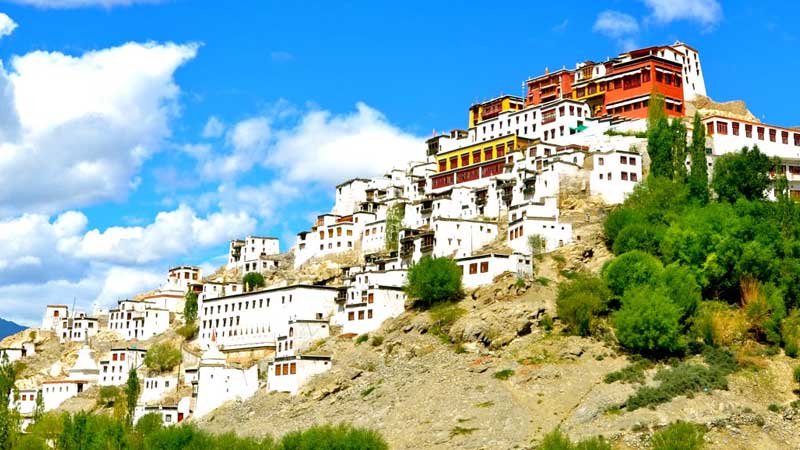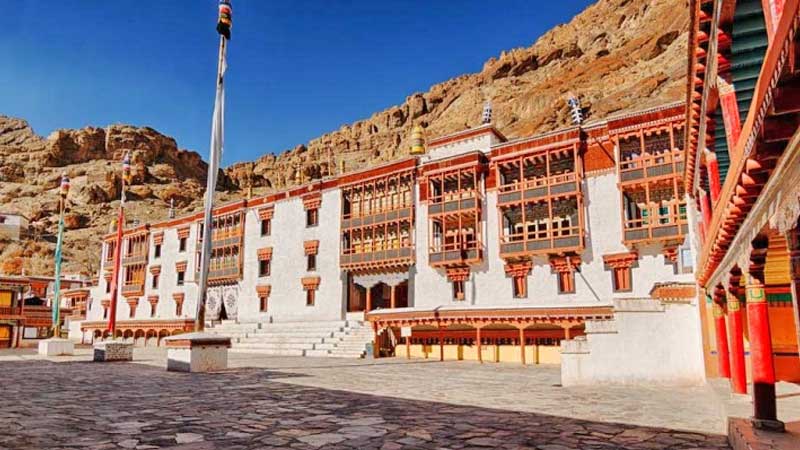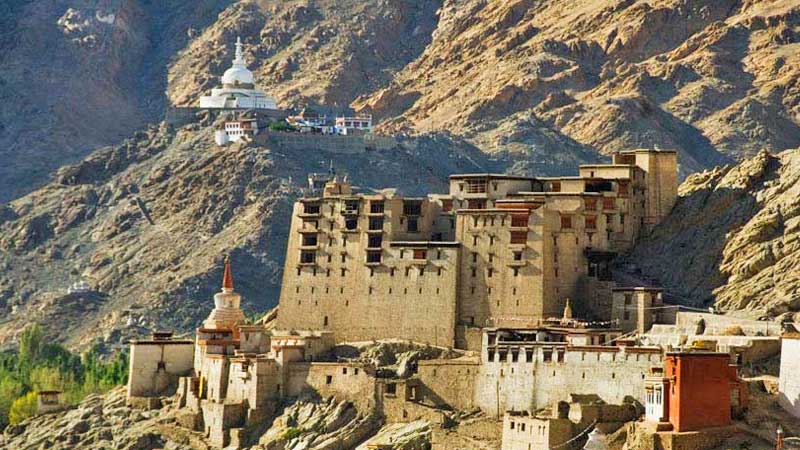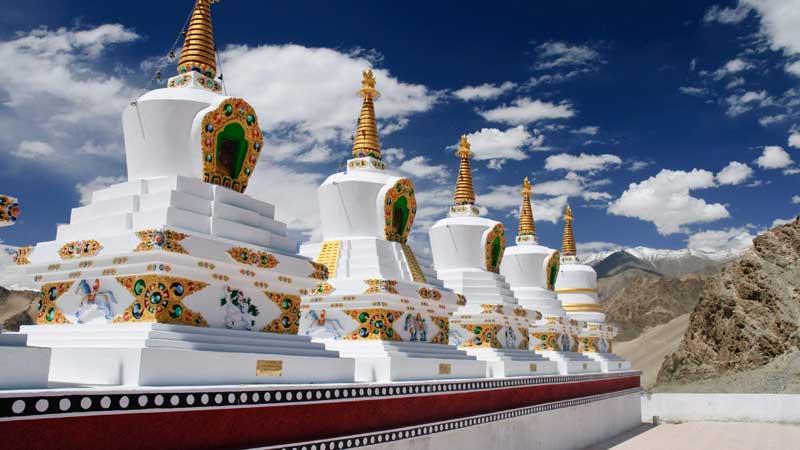
Ladakh Monastery Tour
16 Nights / 17 Days
Delhi - Leh - Delhi
Overview
Ladakh Monastery Tour
Tour Itinerary
Day 1 Arrive Delhi
Begin Your tour
Arrive into Delhi
Welcome to Vardhman's "Ladakh Monastery Tour"
On arrival at Delhi, you will be met and transferred by Vardhaman's representative to the hotel. Freshen up and then proceed for the sight seeing trip of old Delhi.
Visit Red Fort, built in 1648 by Mughal Emperor Shahjehan, Jama Masjid, one of the largest Mosque of India, Raj Ghat and Shanti Vana, the cremation sites of Mahatama Gandhi and Jawaharlal Nehru. Also drive past Chandni Chowk, shopping centre of Old Delhi.
Overnight: Hotel
Day 2 Delhi - Leh
This morning after breakfast, transfer to the Delhi airport to board the flight for Leh.
On arrival, you will be met and transfer to the hotel by our representative. Acclimatization and rest of the day at leisure.
Overnight: Hotel
Day 3 Leh
This morning after breakfast, full day of sightseeing at Hemis Monastery (17th century), Thiksay Monastery (15th century), and Shey Palace (10th century), the oldest capital of Ladakh. For those who are up to a short hike, we can visit the Gotsang meditation place above Hemis.
Thiksey Gompa: It is situated at a distance of approximately 18 km from the town of Leh and belongs to the Gelukpa Order of Buddhism. Sherab Zangpo of Stod got the Thikse Monastery built for the first time, at Stakmo. However, later Spon Paldan Sherab, the nephew of Sherab Zangpo, reconstructed the monastery in the year 1430 AD. The new monastery was sited on a hilltop, to the north of Indus River.It has a temple, known as Lakhang Nyerma, built by Rinchen Zangpo, the Translator, dedicated to Goddess Dorje Chenmo. A huge temple in its time, today it stands mostly in ruins. Also there are a number of other sacred shrines inside the monastery complex. The monastery also has a rich collection of numerous valuable artifacts and ancient relics.
Hemis Monastery: It holds the distinction of being the biggest as well as the wealthiest monastery of Ladakh. It dates back to the year 1630 and was founded by the first incarnation of Stagsang Raspa Nawang Gyatso. Hemis Monastery is positioned inside a gorge, at a distance of approximately 47 km from Leh. Belonging to the Dugpa Order, it stands on the western bank of the Indus River. The monastery also boasts of a very rich collection of ancient relics.The Hemis Monastery also serves as the venue of an annual festival, known as the Hemis Festival. This festival is celebrated as a commemoration of the birth anniversary of Guru Padmasambhav.The Thanka is the sacred appliqué-work tapestry wrought with pearls, which depicts Guru Padmasambhava. And not to be forgotten is a sacred mask dance that is performed at the monastery every year. The dance takes place on 9th and 10th day of the fifth month of the Tibetan calendar.
Shey Gompa: It is situated on a hillock, at a distance of approximately 15 km to the south of Leh town. The monastery was erected on the instructions of King Deldon Namgyal, in the memory of his late father, Singay Namgyal. The main image inside the Shey Monastery is that of Buddha Shalyamuni. It is a huge image of the seated Buddha and is considered to be the biggest metal statue and the second largest Buddha statue in the Ladakh region. Copper sheets, gilded with gold, make up this amazing Buddha statue. The image also contains sacrificial offerings such as grain, jewels, holy signs and mantras inside it.
Overnight: Hotel
Day 4 Leh
After breakfast, proceed for a full day sightseeing of Takthok cave (8 AD), Chemday from the 6th century.
Takthok cave: It is situated in Sakti Village, approximately 46 km from the town of Leh. The site where the monastery is now situated, once served as the meditation cave of Mahasidhas "Kunga Phuntsog". The name Takthok literally means 'rock-roof'. The monastery was so named, as both its roof as well as walls are made up of rock.It belongs to the Nying-ma-pa sect of Buddhism, also known as the Old Order, and serves as the residence of approximately 55 lamas. It is the probably the only Gompa in Ladakh that follows this order. Every year a festival is held here on the 9th and 10th day of the sixth month of the Tibetan calendar. Celebrations of the festival include sacred dances and the ceremony of hurling a votive offering.
Chemday monastery: It is situated 40 Kms east of Leh on the mountain side and was founded 365 years ago by Lama Tagsang Raschen with the Dharmaraja Singey Namgial acting as patron. There is a sacred image of Padmasambhava , one storey high. There are, furthermore, many shrines. Every year on the 28th & 29th days of the 9th Tibetan month sacred dances are performed in association with the festival of an initiatory ritual. The successive reincarnations of Lama Tagsang Raschen act as the incumbents.
Overnight: Hotel
Day 5 Leh
After breaksightseeing of Phyang Monastery (16th century), and Spituk Monastery (11th century). Phyang Kargutpa school and Spituk Gelukpa.
Phyang: Situated on the Leh - Kargil Highway 24 kms. west of Leh, it has a gompa that belongs to the 15th Century built by king Tashi Namgyal. The gompa has tall walled building and houses 50 Prigungpa Lamas. The Dukhang has got 3 silver chortens out of which one has got seven eyed coloured Dezi stone which is believed to be highly auspicious and was brought from Tibet by a former Head Lama. Gonkhang enshrines a furious veiled protector Deoty and also has a great collection of weapons and armours used during the Mongolian invasion of 14th Century.
Phyang is also well-known for its annual festival which is the second largest festival in Ladakh. Phyang Tsedup festival formely used to be held during the winters, but recently it has been rescheduled with the tourist season and is celebrated during the month of July - August. During that, there are Chaam dances and exposition of Giant 10 mtrs. broacade Thangka.
Spituk Monastery: It is located on a high hill overlooking the Indus river about 18 Km from Leh. The Spituk monastery has a wide collection of Buddhist artifacts and for the Spituk festival held from the 17th to 19th days of the 11th month of the Buddhist calendar. Further up the hill is a Mahakal Temple, where an image of Vajrabhairava is unveiled once a year at its annual festival.
Overnight: Hotel
Day 6 Leh
After breakfast, walk up to Leh Palace and Tsemo Gompa. Evening visit to Sangkar Gompa and Japanese Stupa.
Leh Palace: It's located at the edge of the Namgyal hill overlooking the town. Built in the 17th century, it was built as the residential palace for the King Singge Namgyal. Much smaller but resembling the Potala in Lhasa, it is now in ruins. It has nine storeys and has been deserted since the royal family shifted to the Stok Palace in 1830s. nine storeys, but it is now deserted. The Victory Tower set above the palace was built to commemorate the victory of brave Ladakhi soldiers over the invading armies of Balti Kashmiris in the early 16th century. Today, it serves as an office for the Indian Government's archaeological conservation organization. A beautiful example of the medieval Tibetan architecture, it features colossal inclined buttressed walls and protruding wooden balconies.
Namgyal Tsemo Gompa: It was founded in the early 15th century, around the year 1430 by King Tashi Namgyal and has been named after him only. It stands atop the crag behind Leh palace, having a full view of Leh. And because of this position, it offers some of the most splendid visuals of the town. It has rich collection of some ancient manuscripts and wall paintings. It has a three-story high solid gold idol of Maitrieya Buddha (future Buddha, also known as the laughing Buddha). Also, it has a statue of Avaloketesvara and Manjushri, approximately one story high. Near the monastery is an old fort, which, because of neglect, lies mostly in ruins now.
Sankar Gompa: It's located 3-km north of the town centre and is among the most accessible monasteries in central Ladakh - hence its restricted visiting hours for tourists. The monastery has twenty monks, and is the official residence of the Kushok Bakul, Ladakh's head of the Gelug-pa sect.
Overnight: Hotel
Day 7 Leh
After breakfast,Visit Stok Palace (17 km) the residence of present royal family, then Matho Monastery (8 km) and Stakna Monastery.
Stock Palace and Monastery: 15 Kms South of Leh at the West Bank of river Indus is the Royal Palace dating from the 1840s when the invading Dogra forces deposed the king of Ladakh. The Palace is a rambling building where only a dozen of the 80 rooms are used. The Palace Museum (3 rooms) is worth visiting. It is a show piece for the royal thankas (many 400 years old), crown jewels, dresses, coins, peraks encrusted with turquoise and lapis lazuli as well as religious objects. The monastery founded by Lama Lhawang Lotus in 14th century, a short distance away, has some ritual dance- mask (Guru Tseschu) held on the 9th and 10 th day of the Ist month of Tibetan calendar.
Stok Palace Museum: 17 km from Leh town, this museum exhibits precious stones, thangkas, coins, royal crowns and dresses and prayer instruments.
Stakna monastery: It lies at a distance of 25 Kms from Leh on the Right Bank of the River Indus. The monastery formed part of the one of the many religious estates offered to the great scholar saint of Bhutan called Chosje Jamyang Palkar in about 1580 AD by the Dharmaraja Jamyang Namgial who had invited his to Ladakh.
Overnight: Hotel
Day 8 Leh-Lamayuru
After breakfast, drive to Lamayuru (126 km) and visit monastery.
Come back to Temisgam village for overnight stay in Camp.
LAMAYURU MONASTERY: The oldest and spectacularly set Lamayuru monastery is about 125 kms. West of Leh, founded in the 10th century in 11th century the Mahasiddha Naropa came to this place. Then Rinchen Zangpo translator came and built many temples and stupas and then teaching of the Kadampa school came to flourish. Later Jamyang Namgyal offered it to Chosje Danma and Digung Kargyut school were introduced and named Yungdrung Therpalling. The Yundrung Kabgyad festival is held on the 28th and 29th days of the 2nd Tibetan month.
Overnight: Camp
Day 9 Lamayuru-Leh
After breakfast, drive to Leh and on the way visit Alchi Monastery (11th century), and Rizong Monastery.
Alchi: It is located around 67 km from Leh has one of the oldest monasteries in Ladakh region. Alchi Monastery stands on the banks of river Indus. Though traditionally, the oldest monuments preserved here date back to the middle of the 12th century. It is the only monastery built on a flat ground.Its complex has two main temples - Alchi Du-khang and the Sum-tsek. Apart from these, there are Temple of Manjushri, Lotsawa Lha-khang, Lha-khang Soma and 3 Ka-ka-ni (entrance) chortens. It is managed by monks of Likir Monastery. For tourists, it is essential to carry a flashlight since there is no electricty inside and photography is prohibited inside.
RIZONG MONASTERY: Rizong is also known as Yuma Changchubling about 73 Kms from Leh and around 6 Kms from main road, founded about 138 years ago by the great Lama Tsultim Nima. Gompa belong to Gelukpa order. Dress and food provisions are provided for all member of the community by the Governing body of the monastery. The monastery is sited in a most solitary positions and there is a nunnery place called chulichan down the monastery. The work of spinning wool, milking, extracting oil for the temple lamps has to be performed by all the nuns.
Overnight: Hotel
Day 10 Leh
This day is at leisure for you to relax and enjoy yourselves.
Overnight: Hotel
Day 11 Leh- Khardong La -Nubra Valley
After breakfast, drive to the Nubra Valley (130 km) over the Khardong La at 18,000 feet, the highest road in the world. Visit Samstanling Monastery.
Khardung La: It is known as the world’s highest motorable mountain pass. Individuals with their own GPS equipment have, apparently, measured less than the official 18,380 ft that is proudly stated on top of Khardung La, but this does not matter to most bikers who dream about driving their motorbike to the top of the world. Khardung La, 26 miles outside Ladakh’s capital Leh, is to many bikers the ultimate goal after the tough and challenging trip from Manali to Leh.
Sumur and Samstanling Gompa: Sumur is home to the Nubbra valley's most important monastery, Samstem Ling Gompa, forty minutes' walk behind the village. Built in 1841, the Gompa is home to over a hundred Gelugpa monks, aged between seven and seventy. Action centres on the large Du-khang, which is hung with Thangkas and dominated by a huge gilded statue of Shakyamuni, accompanied by Maitreya and the protector deity Mahakala. Across the courtyard, the long, low Gon-Khang is guarded by statues of fierce protector deities strung wit wide-eyed skulls and figurines of the 84 Mahasiddhas, venerated Tantric saints. Samstem ling is linked to the Gompa of Rhizdong in the Indus valley west of Leh.
Overnight: Camp or Guest House
Day 12 Nubra Valley-Hunder/Diskit
Morning after breakfast, proceed for a full day sightseeing of Diskit and Hunder Monasteries. Walk in Hunder village. Visit a local family for tea and chang.
Deskit: It is the headquarters of the present administrative setup of the Nubra valley it is famous for its 515 years old Buddhist monastery, situated on the top of a hill, facing the entire valley; the breathtaking view from the top of almost the entire valley is a lifetime experience, visit Hunder and its temple at a distance of 5 km from Deskit.
Overnight: Hotel
Day 13 Hunder-Leh
After breakfast, drive back to Leh. Visit Khardong village on the way.
Khardong Gompa: It was established in the 12th century by the Gelukpa order. It has a big statue of the Buddha, some nice paintings, some old prayer drums and a library with ancient manuscripts in it. Khardong is the former capital of Lahaul. On the other side of the Bhaga River is a path that comes here.
Overnight: Hotel
Day 14 Leh
This day is at leisure for you to relax, shop and enjoy yourselves.
Overnight: Hotel
Day 15 Leh
After breakfast, visit a traditional Ladakhi family and watch a cultural show.
Overnight: Hotel
Day 16 Leh - Delhi
After breakfast, transfer to Leh airport to board the flight to Delhi.
On arrival in Delhi, transfer to your hotel by our representative. Relax for a while and then visit New Delhi.
Visit Qutab Minar, Humayun's tomb, Lakshminarayan Temple, a modern Hindu Temple, Parliament House, Government Secretarial Building and Connaught place, the shopping centre of New Delhi.
Overnight: Hotel
Day 17 Delhi Departure
After breakfast, transfer to Delhi International airport to board the flight for your onward journey with sweet and unforgettable memories of "Ladakh Monastery Tour" escorted by Vardhman Vacations.
END OF OUR SERVICES
Make Your Trip Now
Get More Packages
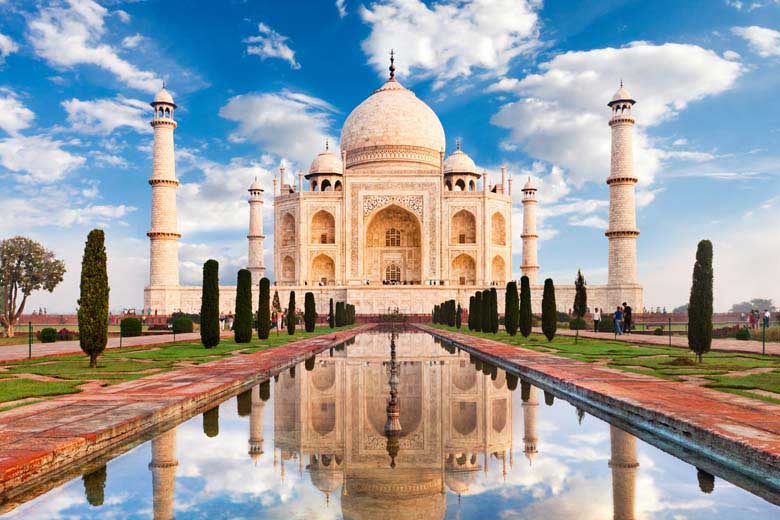
Golden Triangle Vacation Tour
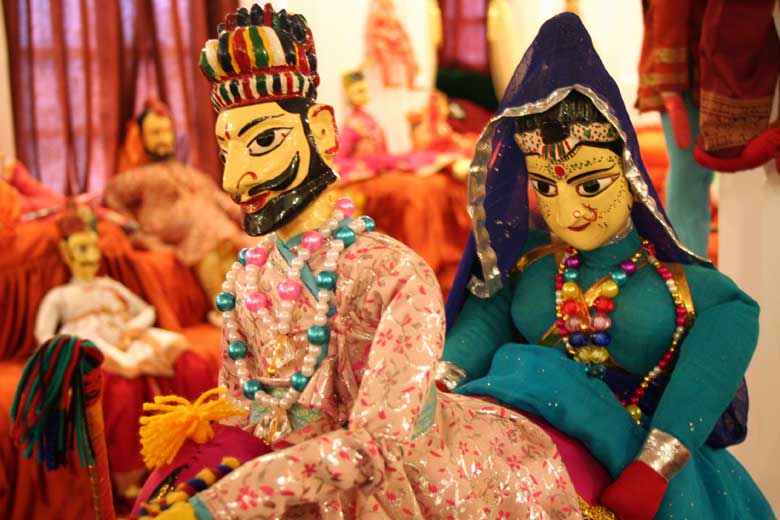
Rajasthan colorful Tour
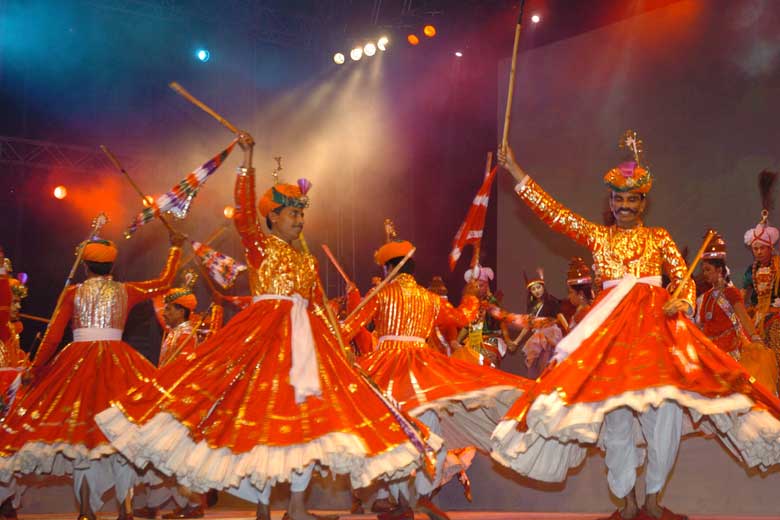
Rajasthan Cultural Tour
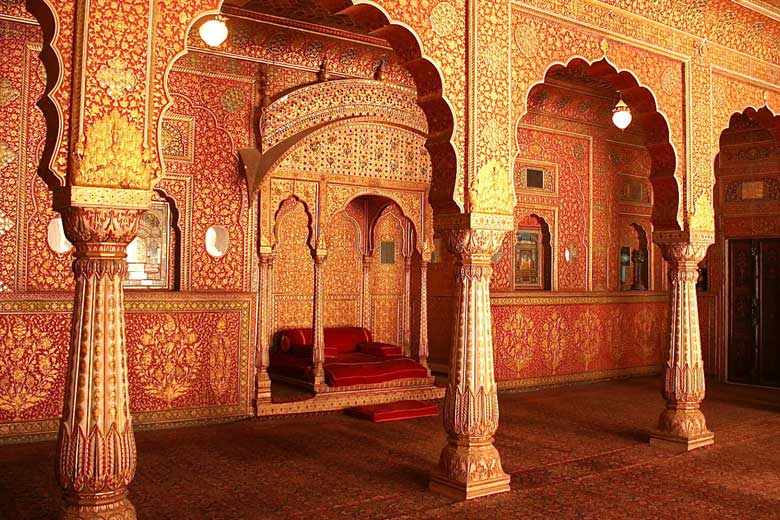
Rajasthan Fort & Palace Tour
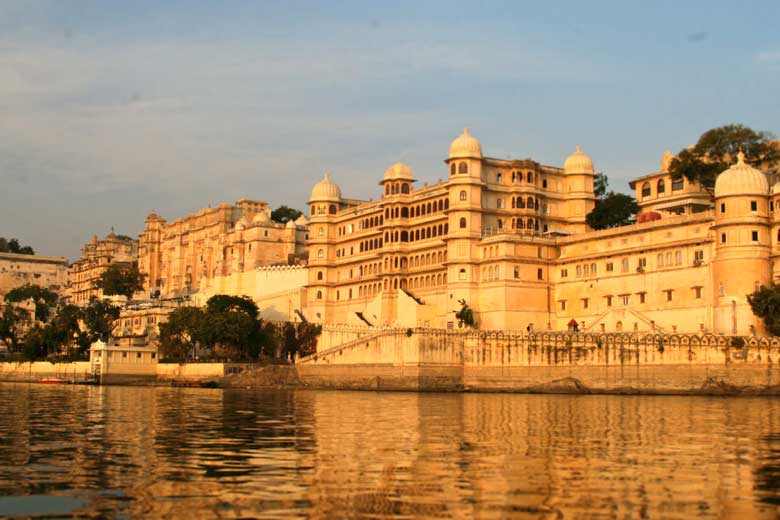
Rajasthan Heritage Tour
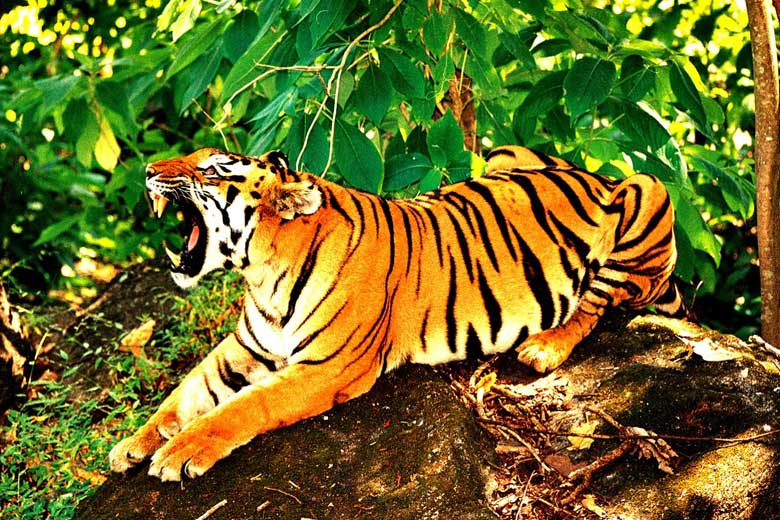
Rajasthan Wildlife Tour
MOST POPULAR PACKAGES

6 Nights / 7 Days
Golden Triangle Vacation Tour
India’s golden triangle is a tourist circuit which includes: Delhi, Agra (including the Taj Mahal), and Jaipur. These trips usually 7 days and do the trip as a circuit starting and ending in Delhi.
View Package
16 Nights / 17 Days
Rajasthan colorful Tour
Coloruful Rajasthan Tour is one of the most popular circuit of India. This tour package accommodates you to endure Rajasthan in all its different colors.
View Package
10 Nights / 11 Days
Rajasthan Cultural Tour
The Rajasthan state represents an unusual diversity in all its forms - people, culture, customs, costumes, cuisine, dialects and music and haveli's.
View Package
12 Nights / 13 Days
Rajasthan Fort & Palace Tour
Rajasthan is famous all over the world for its stunning forts and palaces that have been gloriously standing since decades in this princely state.
View Package
11 Nights / 12 Days
Rajasthan Heritage Tour
Rajasthan known as the "land of kings"provides some marvelous marks from the history in the form of its forts, palaces, mansions and haveli's.
View Package
06 Nights / 07 Days
Rajasthan Wildlife Tour
The name Rajasthan has a habit of invoking the images of sun-bathed sand dunes of the Thar Desert, the rustic turban and mustache of Rajasthani men and women’s ghagra.
View Package
 Gujarat Toursim
Gujarat Toursim
 IATO -
Indian Association of Tour Operators
IATO -
Indian Association of Tour Operators
 +91-9811175768
+91-9811175768